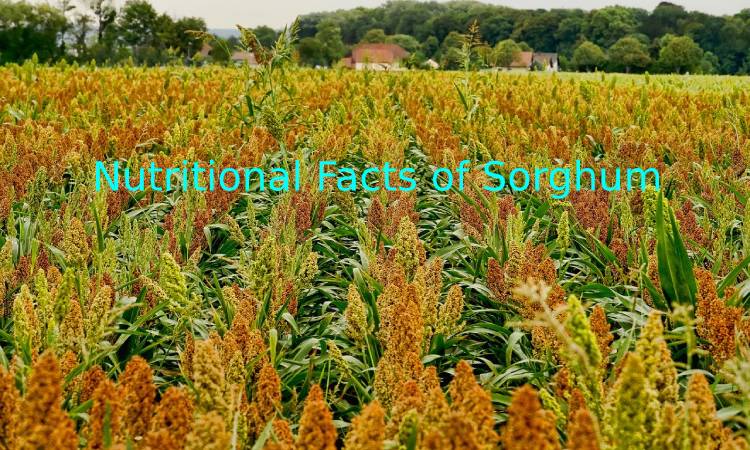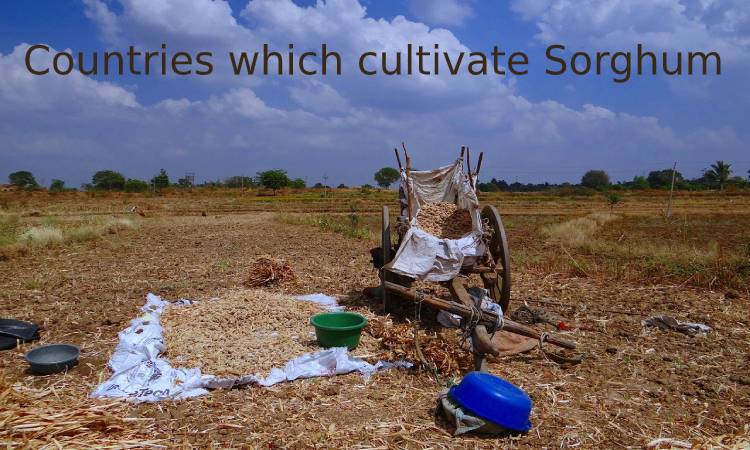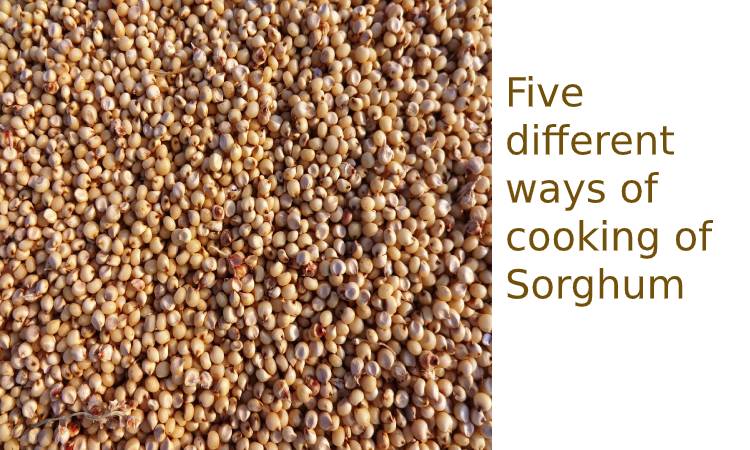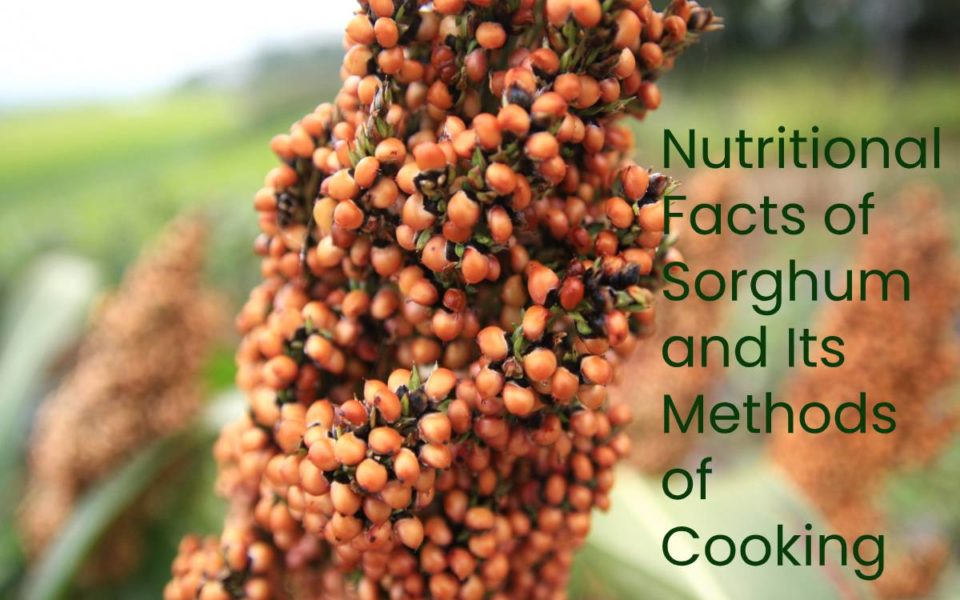The sorghum currently cultivated comes from its wild progenitor from India, north-eastern Africa, and in China because high Sorghum nutrition. Its current consumption is very low or insignificant in most countries. Furthermore, its consumption has remained stagnant in the last 35 years, unlike the other cereals that have increased their consumption. The countries that cultivate it the most, are states of India, Ethiopia and Somalia, Botswana, Lesotho, Yemen, and some provinces of China.
Table of Contents.
The sorghum grain varies in color, ranging from white to dark shades of red, brown, and purple. The grains are generally spherical but vary in dimension and shape. For humans who consume it, prefer long grains.
Nutritional Facts in Sorghum Nutrition
 Nutritionally, sorghum, like millet, is fundamentally starchy. As for its protein content, it is also very similar to millet and comparable to wheat and corn. And like the latter, it also does not contain gluten. In minerals, we can highlight iron, phosphorus, and calcium. It is also remarkable for its high fiber content and the low digestibility of its nutritional elements. As for vitamins, whole grains are an essential source of B vitamins, exceptionally concentrated in the outer layers of the grain bran. Some more yellowish varieties also contain beta-carotene.
Nutritionally, sorghum, like millet, is fundamentally starchy. As for its protein content, it is also very similar to millet and comparable to wheat and corn. And like the latter, it also does not contain gluten. In minerals, we can highlight iron, phosphorus, and calcium. It is also remarkable for its high fiber content and the low digestibility of its nutritional elements. As for vitamins, whole grains are an essential source of B vitamins, exceptionally concentrated in the outer layers of the grain bran. Some more yellowish varieties also contain beta-carotene.
Countries which cultivate Sorghum
 Sorghum is a tremendously popular cereal in China. In fact, In the Asian giant, it is mainly used to make popular spirits. However, it is a new cereal from a nutritional point of view, which has recently become popular.
Sorghum is a tremendously popular cereal in China. In fact, In the Asian giant, it is mainly used to make popular spirits. However, it is a new cereal from a nutritional point of view, which has recently become popular.
It is common to consume it directly to make flours with which to bake bread. The grain can cook to accompany other foods, similar to rice. In other countries such as India, the United States, Mexico, Japan, and Argentina, it is common to use it for feed.
As we were saying, it is a portion of exotic food for people. So it opens a new window for celiacs. It is rich in carbohydrates and, like any cereal, combined by legumes or milk, it allows obtaining proteins of high biological value.
This cereal is very common in the diet of India and Central Africa, where it is known as “kafir.” It is a very similar food to corn in terms of its properties and even its appearance. Thus, flour comes from its grain with which pieces of bread and pastries can prepare by that. It also uses as an ingredient in alcoholic beverages.
This cereal stands out for its high fiber content, which helps fight constipation and regulates intestinal transit. At the same time, the iron supply prevents anemia problems—another of its properties regulating the blood sugar level.
Sorghum Nutrition (per 100 grams):
Calories: 307 kcal
Proteins: 8 g
Carbohydrates: 72.8 g
Fat: 4 g
Fiber: 7.5 g
Calcium: 50mg
Iron: 4.3 mg
Cultivation of Sorghum

It is interesting because he spends little time on the ground. With an inexpensive herbicide, you can control practically everything. “It is sown in May and harvested in September, so it leaves the land to rest. It is almost a fallow without being one,” says Jose Antonio Garcia, a sorghum producer for eight years.
One of its significant advantages is the amount of organic matter it leaves in the soil when it is collected. “With the harvest, the stubble that remains in the soil returns about 50% of the nutrients it has needed for its development, which translates into a lower cost of fertilizers in the following season,” says Laura Cobs. It has management very similar to that of corn when preparing the ground for planting. The machinery used is the conventional one for the cereal. However, the sowing can also do with a corn planter.
Early in its development, sorghum withstands low temperatures well, but declines at flowering may reduce grain yield. On the contrary, it is a crop that withstands high temperatures well. Also, it has excellent resistance to drought for long periods, restoring its growth once it stops.
Production costs are around 600 euros per hectare – which includes irrigation, labor, herbicide, fertilizer – separate seed expense. However, the amounts vary according to the companies. “Productions range from 6,000 to 7,000 kilos depending on our quality objectives, with the advantage that the price fix for all time.
Five Different Ways of Cooking Without Affecting Sorghum Nutrition
 You can prepare several satisfying meals with sorghum flour or grain sorghum.
You can prepare several satisfying meals with sorghum flour or grain sorghum.
Step 1
Make sorghum popcorn with the grains of this cereal. This sorghum snack looks and tastes similar to popcorn. Heat a deep pot with a tablespoon of cooking oil and let it smoke. Reduce heat and add 2 oz. (56.70 grams) of sorghum grains. Cover the pot with a lid and let the beans explode. Serve with a little salt or cayenne pepper.
Step 2
Use sorghum flour to make a nutritious sorghum soup. Mix 1 cup of sorghum flour with 1/2 cup of water in a bowl and set aside. In another container, pour 3 cups of water and boil them over medium heat. Add the flour mixture and cook until it has a creamy texture. Add 1 cup buttermilk and two tablespoons sugar, stir and cook for five more minutes or until the soup begins to boil. Serve it at breakfast or during lunch. Reduce the amount of water if you prefer a thicker consistency.
Step 3
Mix sorghum flour with herbs and spices to make a batter. In a bowl, mix 1 cup of sorghum flour, two tablespoons of cornstarch, two teaspoons of salt, and 1/2 teaspoon of garlic, onion, and cayenne pepper powder. For a crispy texture, use the sorghum batter to evenly coat chicken, meat, and fish before frying. Store the leftover batter in an airtight jar and place it in the refrigerator.
Step 4
Bake cakes, cookies, puddings, pieces of bread, and other baked goods with sorghum flour. Use sorghum to prepare baked goods recipes, substitute wheat flour for sorghum, mix them, or use sorghum with other types of flour, such as oatmeal, chickpea flour, or rice flour. When baking with sorghum flour, add one teaspoon of cornstarch to mix one and an additional teaspoon of oil or fat to make the finished baked product moister.
Step 5
Substitute rice with sorghum grains. Cook them the same way as rice and serve them with fish, meat, or vegetables.


